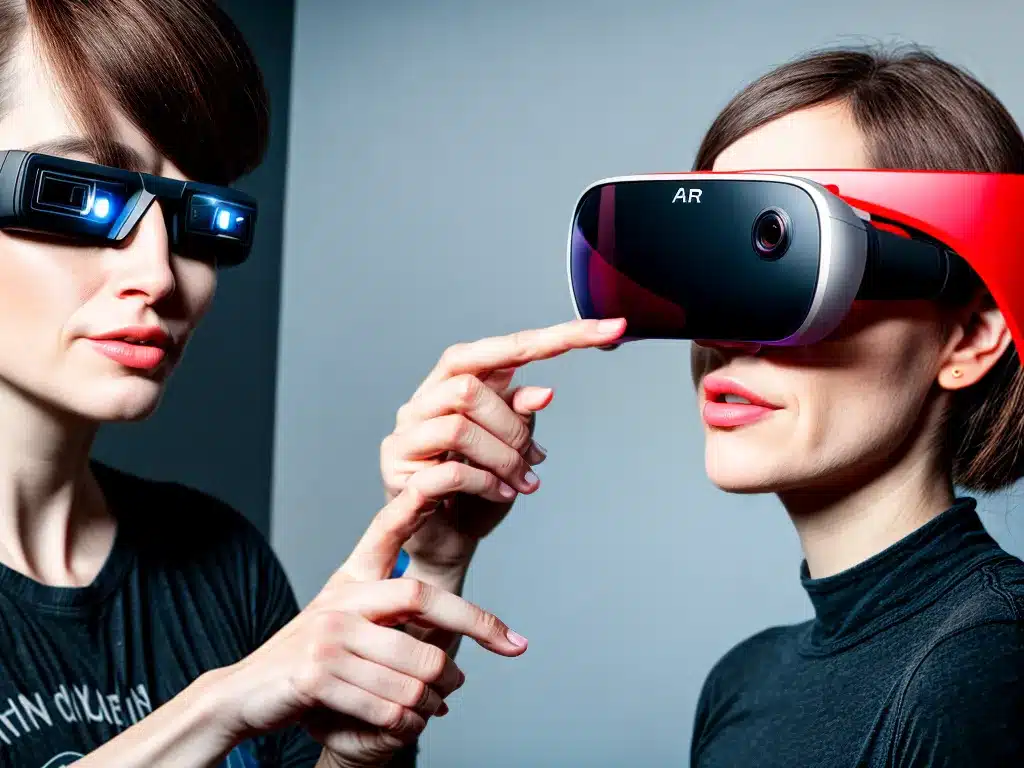
Will AR Glasses Replace Smartphones?
Augmented reality (AR) glasses are an emerging technology that overlays digital information onto the real world. Many people believe AR glasses will eventually replace smartphones as the primary mobile computing device. Here is an in-depth look at whether AR glasses can truly replace smartphones.
How AR Glasses Work
AR glasses use cameras, sensors, and displays to overlay digital images and information onto your view. For example, AR glasses can:
- Display directions, notifications, and other information in your field of vision
- Identify objects and places, bringing up relevant details
- Allow you to interact with virtual objects that appear in the real world
This creates an “augmented” view where digital content is seamlessly blended into your surroundings. AR glasses aim to provide hands-free access to information while remaining engaged with the real world.
Current State of AR Glasses
AR technology has seen major advances, but AR glasses are still in the early stages of development. Some examples of current consumer AR glasses include:
- Google Glass – An early pioneer that sparked interest but failed to gain traction
- Microsoft HoloLens – An advanced AR headset aimed at enterprise and government use
- Snap Spectacles – AR-enabled sunglasses with limited capabilities
- North Focals – Fashion-focused smart glasses with a small display
These glasses demonstrate the potential of AR, but most lack the sleek design, advanced optics, powerful processing, and robust software ecosystems needed for mass adoption.
Challenges Facing AR Glasses
- Limited field of view – Most AR glasses have narrow fields of view
- Bulky designs – Current glasses are thick and heavy
- High costs – Prohibitive pricing with most models costing over $1000
- Short battery life – Typical battery life is less than 5 hours of active use
- Lack of apps and ecosystems – Minimal developer support and use cases
AR glasses hardware and software need major improvements before they can rival smartphones. But rapid advances in miniaturization and optics point to a bright future.
How AR Glasses Could Replace Smartphones
For AR glasses to replace smartphones as the primary mobile computing platform, they need to match or exceed smartphones’ capabilities.
Potential Advantages of AR Glasses
- Truly hands-free usage – AR glasses enable accessing information without handling a device
- Seamless blending of real and digital – Content overlays directly onto the world for a natural experience
- Faster, heads-up access to information – Glasses can rapidly display relevant information in your field of vision
- More immersive AR/VR experiences – Stereoscopic displays and spatial audio create lifelike virtual environments
Additionally, AR glasses provide new ways of interacting with information via gestures, eye tracking, and voice commands.
What AR Glasses Need to Match Smartphones
For AR glasses to compete with smartphones, they must have:
- Sleek, stylish designs – Lightweight, comfortable, and socially acceptable aesthetics
- Powerful processing – Fast chips to handle advanced graphics, AI, and connectivity
- All-day battery life – At least 6-8 hours of active usage from a charge
- 5G and WiFi connectivity – Fast and reliable connectivity
- App ecosystems – Robust ecosystems of third-party apps and services
- Enterprise support – Integration with business tools and systems
- Affordable pricing – Mainstream pricing around $500 range
AR glasses will need several more product generations to achieve these capabilities. But considering the rapid pace of innovation, this future could arrive in the next 5-10 years.
Key Factors in the Smartphone vs. AR Race
It remains uncertain if or when AR glasses will displace smartphones. Here are some key factors that will determine the outcome of this race:
- Miniaturization – Making components like displays and batteries smaller and lighter
- Connectivity – Seamlessly blending 5G, WiFi, and other wireless tech
- Interfaces – Mastering interaction via eye tracking, gesture, and voice
- Content ecosystems – Building engaging ecosystems of AR apps, media, and services
- Pivot of tech giants – Whether companies like Apple and Google prioritize AR glasses
- Price point – Hitting affordable price points for mainstream adoption
- Social acceptance – Making AR glasses stylish and socially acceptable
The companies that best tackle these challenges could determine if AR glasses reach their potential as the next computing platform. But expect the capabilities of AR glasses and smartphones to converge over the next decade.
The Future: Coexistence of Smartphones and AR Glasses
In the short term, AR glasses are unlikely to completely replace smartphones. However, they may emerge as a complementary device that reduces smartphone use.
Here are some ways smartphones and AR glasses could co-exist:
- Use AR glasses for quick tasks like messages, directions, and lookups
- Use smartphones for more immersive apps, complex tasks, and content creation
- Share connectivity between glasses and phones to avoid duplication
- Use phones as processing hubs that offload heavy computing from glasses
- Tap phones for larger screens when needed for gaming, videos, etc.
The future could see AR glasses become the primary personal computing device while smartphones evolve into multipurpose pocket computers. This would enable people to seamlessly migrate tasks between complementary devices.
But for now, AR glasses still have a long way to go before they are ready to displace the ubiquitous smartphone. Exciting innovation lies ahead that could blur the lines between phones and glasses.












